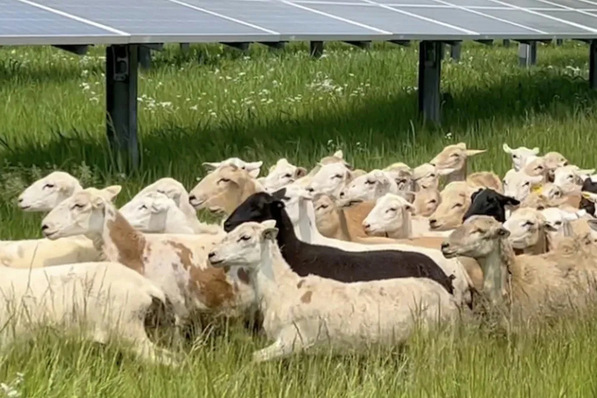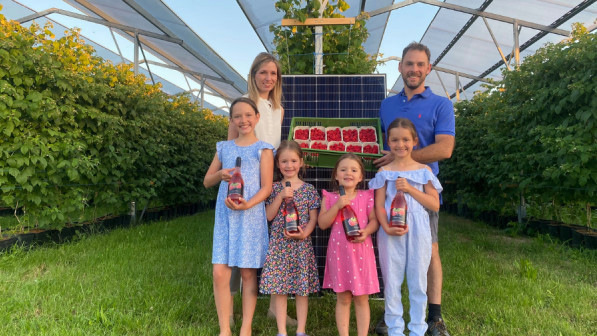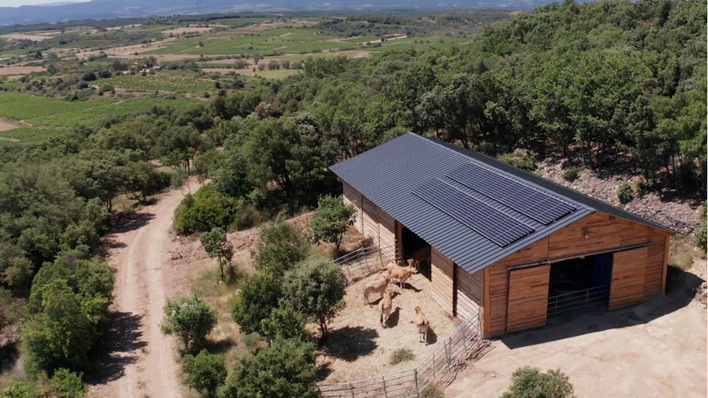When it comes to green energy production in agriculture, the biogas plant immediately pops up in the mind’s eye. In fact, most of these systems are installed on farms. Only a few of them are operated by municipalities or local authorities. But a biogas plant does not run by itself.
It needs auxiliary energy to operate various pumps, screw conveyors and the agitator, among other things. Drawing this energy from the electricity grid is hardly economical, as the electricity price from the utility has long been higher than the remuneration for the electricity fed into the distribution grid.
Johannes Steuer developed a solution to this problem together with IBC Solar, a system house for photovoltaic systems and storage systems from Bad Staffelstein in Upper Franconia. They were supported by the experts from Elektro Kondra, a specialist partner of IBC Solar. Steuer runs his farm in Burgkunstadt, a small town in the Franconian district of Lichtenfels. He uses the manure from his animals as raw material for the biogas plant, which powers two combined heat and power units (CHP) with the gas produced.
30 kilowatts for auxiliary power
The auxiliary power is supplied by a photovoltaic system with an output of 30 kilowatts. This generates so much electricity that – in purely mathematical terms – it can provide more than half of the auxiliary power consumed by the biogas plant throughout the year.
How to combine agri-PV with wind power and storage?
However, since the solar energy is not always available when the pumps, the agitator and the screw conveyors are running, the solar generator can actually provide only a quarter of the auxiliary energy for the biopower plant.
Storage unit covers peak loads
To improve this value and to be able to operate the biogas plant with its own electricity even in times without sunshine, IBC Solar has installed an additional battery storage system. This temporarily stores the solar power that is not directly used by the consumers in the plant.
If the yield from the solar plant is not sufficient, the storage unit supplies the energy for the biogas plant. „The output of 18 kilowatts is sufficient to cover the load peaks of the biogas plant,“ explains Andreas Lipphardt, responsible for technical support for commercial customers at IBC Solar. „These occur repeatedly for about half an hour throughout the day and night. After that, the consumers stand still again for two hours before they start up again.“
Agri-PV: "Dual use with animal husbandry has great potential"
With a usable storage capacity of 72 kilowatt-hours, Johannes Steuer can double the power supply of the biogas system with his own solar power and thus also run it almost half with solar energy in real terms in the annual balance. To do this, he uses more than three quarters of the solar power generated.
He feeds the remaining quarter into the grid and receives compensation for it according to the EEG, the renewable energy law in Germany. „The consumers in the biogas plant are also easy to regulate, so self-consumption and the degree of self-sufficiency increase,“ says Johannes Steuer. „This allows me to make good use of the storage volume.“
Full self-sufficiency in summer
The entire system is designed so that on sunny days the solar plant can supply all consumers in the biogas plant. It then generates so much energy that the storage unit is fully charged between 1 and 2 pm. After that, the solar power that is not consumed directly on site is fed into the grid. „I can then get through the night with the fully charged battery,“ the farmer explains. „But the storage unit is almost empty when the sun rises the next morning – except for a residue that always has to be left over for the emergency power supply.“
Italy: 1.5 gigawatts of agri-PV will receive funding
On cloudy days, however, the yield of the solar system is not enough to cover the entire consumption of the biogas plant and charge the storage unit at the same time. Then the battery is only half full in the evening. At such times, the energy has to come from outside the grid.
You can read the full story in our special about self-consumption of own solar electricity on farms. The spacial is ready for download free of charge here. (su)








